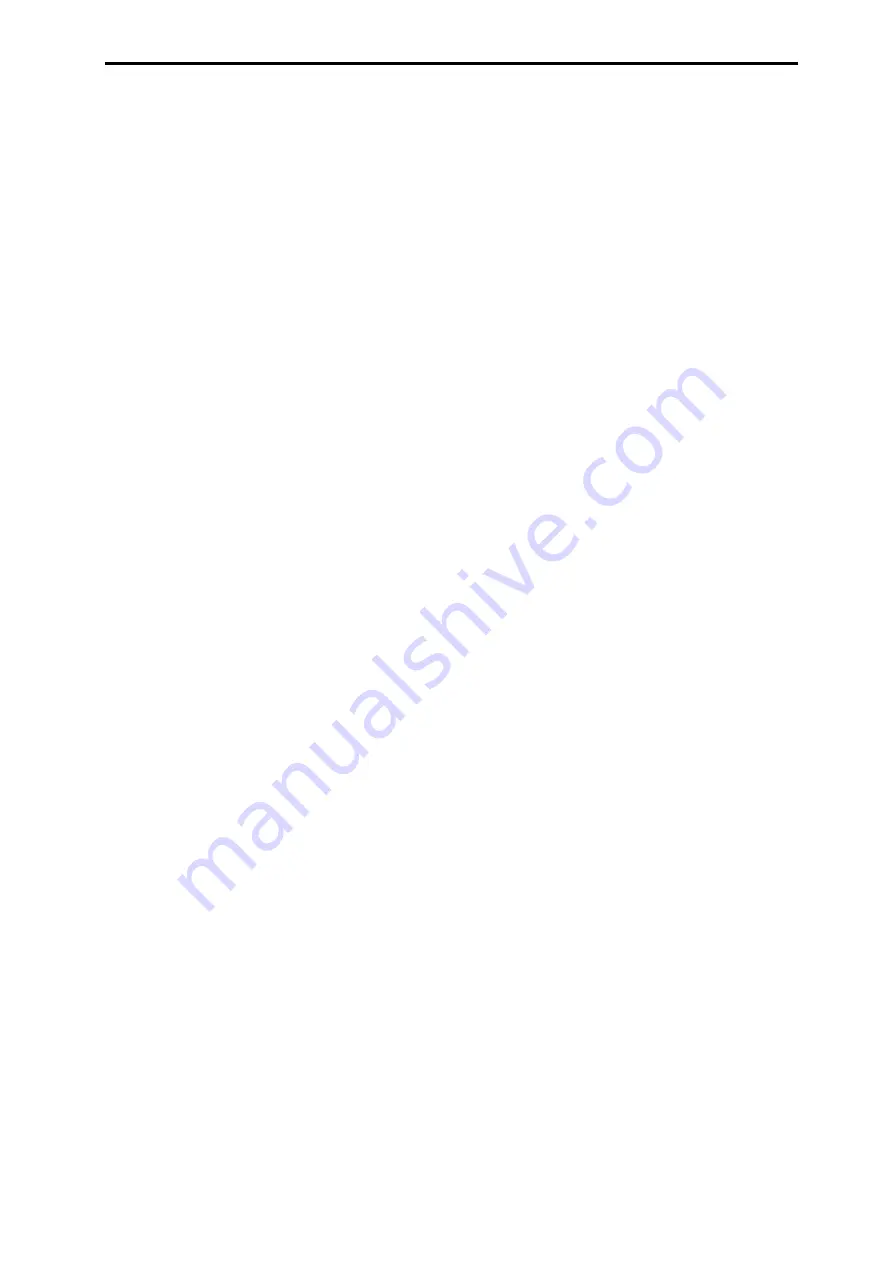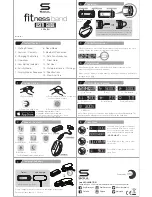
Alternate Modulation Sources (AMS) The effects of AMS on various parameters, and example applications
379
EG Time —
Pitch EG (Prog 2–8c)
Filter EG (Prog 3–1–5c)
Amp EG (Prog 4–3d)
EG times can be controlled by the Common LFO, keyboard
tracking, controllers, or tempo etc.
You can specify an
Intensity
value for each EG segment
(
Attack
,
Decay
,
Slope
,
Release
). EG times are determined
by the Alternate Modulation value when the preceding
point is reached. For example, the Alternate Modulation
value at the moment the envelope reaches the attack level
will determine the decay time.
If
Intensity
is set to a value of 8, 17, 25, 33, 41, or 49, the
corresponding time can be multiplied by a maximum of 2, 4,
8, 16, 32, or 64 times (or divided by 1/2, 1/4, 1/8, 1/16, 1/
32, 1/64).
• Select JS +Y:CC#01 for
AMS
, and set
AMS Intensity
to
+8, “At” to +, “Dc” to –, and “Sl” and “Rl” to 0. When
you move the joystick in the +Y direction, the Attack
Time will be lengthened by a maximum of 2 times. The
Decay Time will be shortened by a maximum of 1/2.
The Slope and Release times will not change.
LFO Frequency (Prog 5–1a)
The frequency of LFO 1, 2 or Common LFO can be
controlled by the EG, keyboard tracking, controllers, or
tempo etc.
You can also use the LFO2 frequency to modulate LFO1, or
use the Common LFO frequency to modulate LFO 1/2.
If
Intensity
is set to a value of 16, 33, 49, 66, 82, or 99, the
corresponding frequency can be multiplied by a maximum
of 2, 4, 8, 16, 32, or 64 times (or divided by 1/2, 1/4, 1/8, 1/
16, 1/32, 1/64).
• Select JS +Y:CC#01 for
AMS
, and set
Intensity
to +16.
When you move the joystick in the +Y direction, the LFO
frequency will be increased by a maximum of 2 times. If
you set
Intensity
to –16 and move the joystick in the +Y
direction, the LFO frequency will be decreased by up to
1/2.
LFO Frequency AMS Intensity (Prog 5–1b)
You can use the EG, keyboard tracking, controllers, or tempo
etc. to control the intensity of the AMS that controls the
frequency of the LFO 1, 2, or Common LFO.
For example if you’re using the pitch EG to modulate the
LFO frequency, you could use a separate AMS to control the
depth of this effect.
• Set
AMS
to a controller such as SW 1 or 2, so that the
pitch EG will lightly control the LFO frequency when the
switch is off, and more deeply when the switch is on.
LFO Shape (Prog 5–1a)
You can use a EG, keyboard tracking, controllers, or tempo
etc. to control the shape of the LFO 1, 2, or Common LFO
waveform. You can also use the LFO2 frequency to
modulate LFO1, or use the Common LFO frequency to
modulate LFO 1/2.
• You can control the LFO waveform by setting
AMS
to a
controller such as JS+Y, and operating the controller
when desired.
Common LFO Reset (Prog 5–8a)
You can use a controller or tempo etc. to reset the Common
LFO.
• By setting
AMS
to Gate 1, you can make the Common
LFO reset when a note is played from a state in which all
notes are off. For example, this will ensure that a filter
sweep always starts from the same place.
• You can set
AMS
to a controller such as JS+Y: CC#01,
and operate the controller when you want to reset the
LFO.
Summary of Contents for M50-73
Page 1: ...2 E Parameter Guide ...
Page 86: ...Program mode 78 ...
Page 132: ...Combination mode 124 ...
Page 222: ...Sequencer mode 214 ...
Page 297: ...Effect Mixer Block Diagrams Main Outputs 289 ...
Page 418: ...Appendices 410 ...
















































